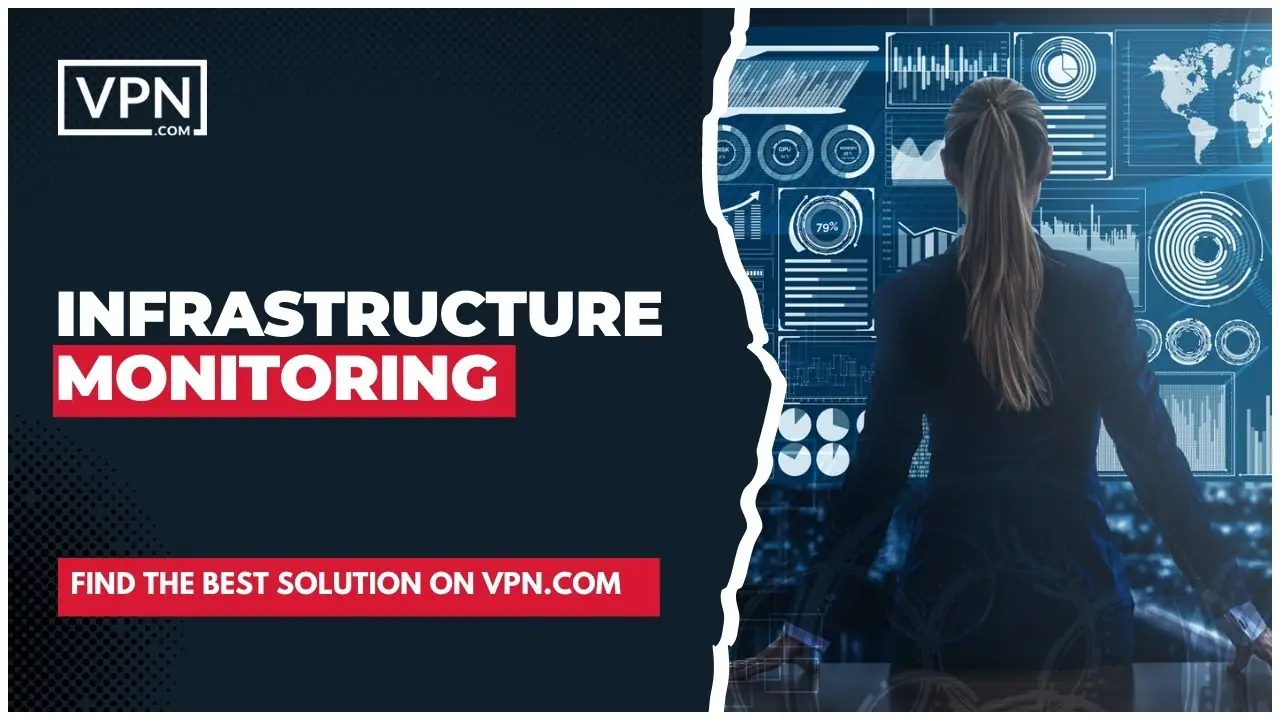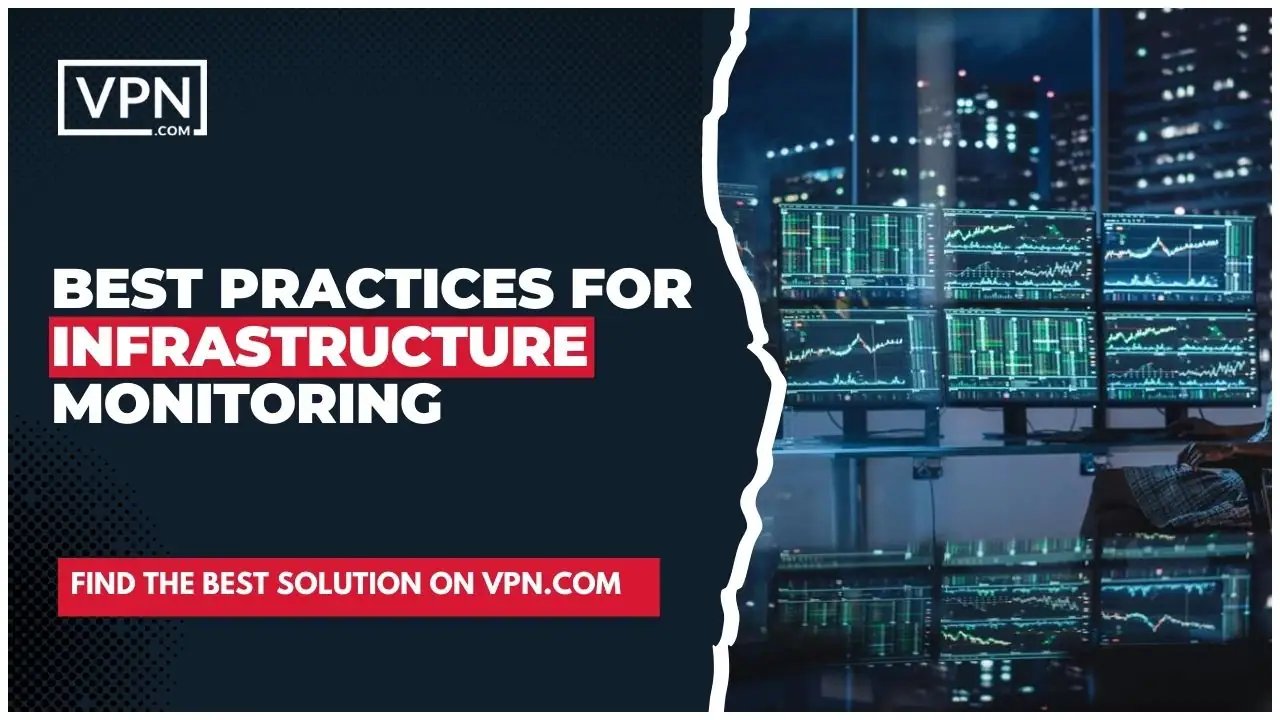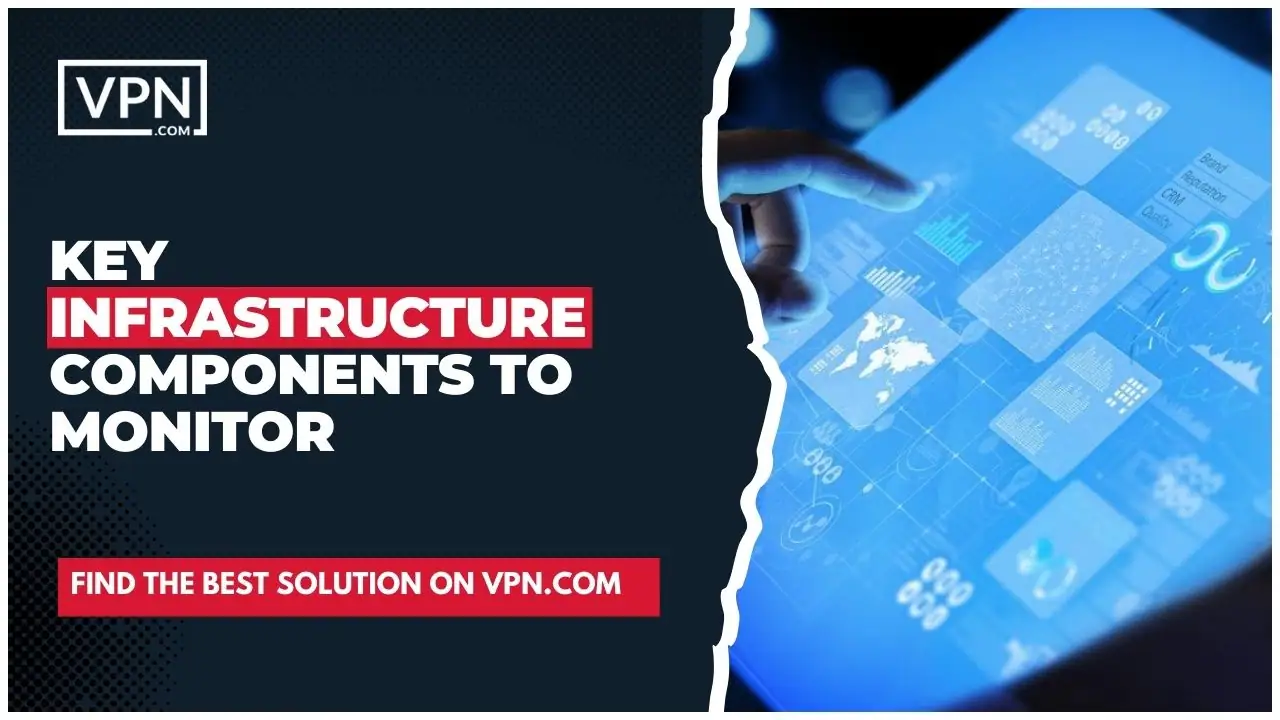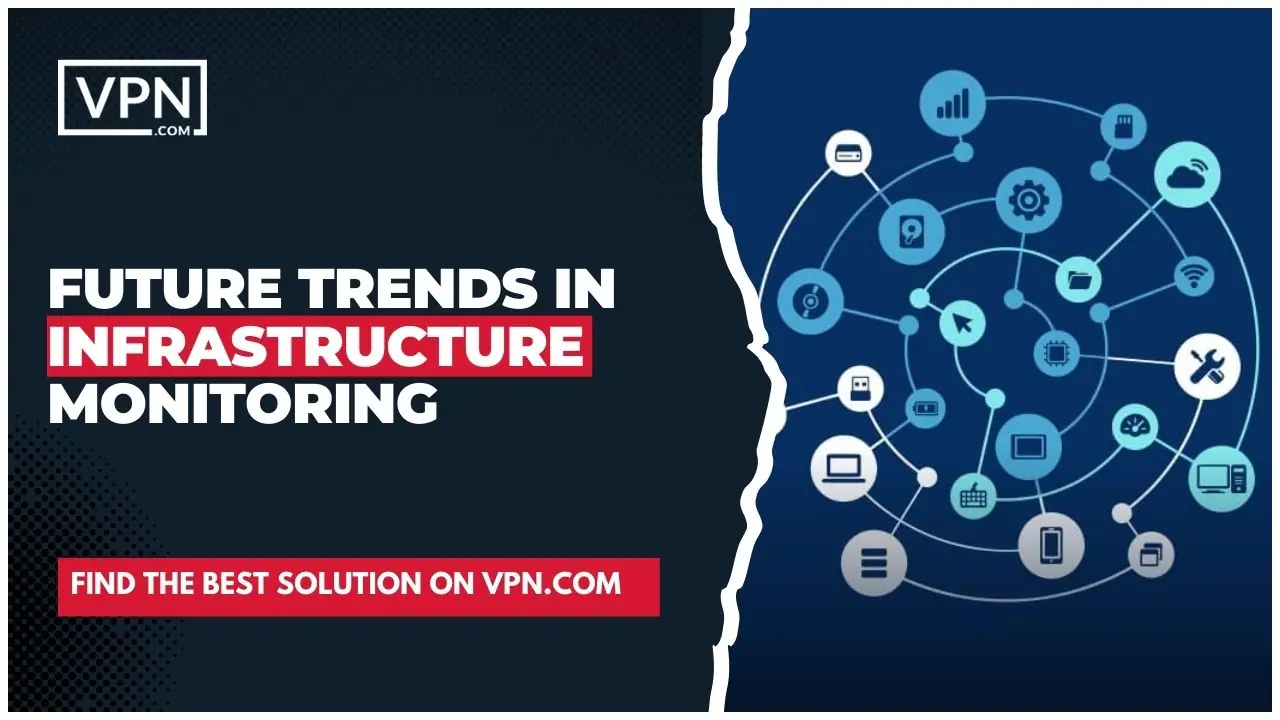Infrastructure Monitoring

Infrastructure monitoring tracks and analyzes network, server, and application performance to discover and resolve issues. Technology-dependent companies must prioritize this. Without adequate monitoring, even the tiniest issue can become a huge outage, costing revenue and productivity. This article discusses the necessity of infrastructure monitoring, typical tools and methodologies, and practical suggestions for businesses looking to increase their monitoring capabilities. This essay will benefit IT professionals and non-IT professionals alike.

Signup at our #1 host
- Reduce Costs
- Shorten time to market
- Increase efficiency
- Improve agility & consistency
What Is Infrastructure Monitoring?
Any IT-dependent company needs infrastructure monitoring. Tracking and analyzing servers, networks, applications, databases, and storage systems ensures maximum performance, availability, and security. Infrastructure monitoring improves uptime, downtime, issue detection, and problem-solving.
Response times, resource utilization, error rates, and throughput are typically monitored depending on the infrastructure. Real-time monitoring solutions assist IT teams find and fix issues before they affect important systems. Infrastructure monitoring optimizes IT systems, improves user experience, and achieves corporate goals.
What Are The Challenges Of Infrastructure Monitoring?

The challenges for infrastructure monitoring are Dynamic and elastic nature of cloud infrastructure, lack of visibility, security compliance and cost optimization. Cloud infrastructure is dynamic and elastic. This flexibility provides for unmatched scalability, but it can also obscure behind-the-scenes activity. In multi-cloud setups, data may be dispersed across servers and locations.
Cloud storage of sensitive data might raise security and compliance concerns. Thus, cost optimization measures must be used to maximize company ROI. Despite these hurdles, cloud infrastructure helps firms innovate and develop, increasing productivity and efficiency.
Dynamic And Elastic Nature Of Cloud Infrastructure
Infrastructure monitoring has become increasingly important to ensuring an organization’s success as technology develops. It can be challenging to keep up with changes in infrastructure and expand appropriately, though. Businesses need to put in place a monitoring strategy that can easily adapt to changes in real-time in order to meet demand and guarantee maximum uptime.
This calls for the chosen infrastructure monitoring system to be adaptable, scalable, and quick to respond to shifting demands. Inadequate infrastructure monitoring can result in unforeseen issues including system breakdowns, longer downtime, and costly repairs. Scaling infrastructure monitoring must therefore be prioritized in order to keep up with the constantly evolving needs of current technology.
Lack Of Visibility
Managing and monitoring resources in multi-cloud systems may be a real pain. It might be tough to retain visibility and guarantee that everything is working smoothly when there are multiple silos and stacks. However, there are solutions available to assist firms in managing their multi-cloud architecture. These tools provide a holistic picture of resources across many clouds, as well as detailed insights into usage and performance.
Businesses can enhance resource allocation and make more informed decisions regarding IT investments by utilizing these technologies. Finally, this results in a more efficient and effective multi-cloud environment, which can assist businesses in staying ahead of the curve in a quickly expanding digital landscape.

Signup at our #1 host
- Reduce Costs
- Shorten time to market
- Increase efficiency
- Improve agility & consistency
Security And Compliance
Online data sharing and storage have made privacy and data protection more critical. Compliance and audit regulations guarantee organizations handle sensitive data transparently and responsibly. Violations carry legal penalties and significant reputation damage. Businesses must prioritize data privacy to defend their financial interests and client confidence. Compliance and audit methods prevent data breaches and build stakeholder trust by showing data safety and privacy.
Cost Optimization
Cost-performance balance is more important than ever in a company. Some companies cut costs to boost revenues, but this might lower quality. Overspending wastes money and reduces profitability. Find inefficient spending and cut costs without sacrificing performance. This demands comprehensive review of all corporate processes, from production to marketing, and a willingness to cut back. In today’s competitive environment, organizations can thrive with a strategic cost-performance balance.
What Are The Best Practices For Infrastructure Monitoring?

The best practices for infrastructure monitoring are monitoring goals metrics, use automated tools, monitor everything, establish baseline, set threshold and alerts, use dashboard and reporting and continuously optimize.
It is crucial to routinely monitor your systems and applications in the fast-paced digital environment of today. However, personally checking everything can be time-consuming and error-prone. Determining infrastructure monitoring objectives and metrics, as well as utilizing automated technologies, are useful at this point.
You may swiftly discover and address problems, guarantee a better customer experience, and satisfy your company’s key performance indicators by defining defined monitoring goals and metrics.
A variety of automated technologies, like network monitoring software, application performance monitoring tools, and log management solutions, can be used to keep an eye on your applications, systems, and infrastructure. You can create baselines, set thresholds and alerts, use dashboards and reports, and continuously enhance your monitoring solutions to better your monitoring tactics. The ultimate objective is to achieve operational excellence, maximize uptime and availability, and reduce downtime.
Monitoring Goals And Metrics
Any business plan must clearly define its goals and success factors, but it’s also critical to select measurements that support those objectives. Consider how each measure relates to your overall business objectives when choosing which metrics to monitor.
For instance, monitoring measures like response time, resolution rate, or CSAT score could provide you with insightful information about how your clients view your services if your objective is to increase customer happiness. It goes beyond just selecting the appropriate measurements.
Additionally, it involves going deep and identifying precisely the data you require to assess success, establish reasonable goals, and arrive at judgments that will advance your company.

Signup at our #1 host
- Reduce Costs
- Shorten time to market
- Increase efficiency
- Improve agility & consistency
Use Automated Tools
Companies must keep up with technology’s rapid growth to stay competitive. Machine learning and AI automate monitoring and alerts. These powerful tools allow firms to use their data to detect possible problems and act before they become huge concerns. This visibility saves time and money and streamlines processes. As we look ahead, those who adopt these technologies will have a huge advantage over their competition. Why wait? Use machine learning and AI to automate monitoring and alerting today.
Monitor Everything
As businesses continue to digitize and automate, gathering and maintaining extensive data has become critical to ensuring success. However, simply gathering data is not enough; end-to-end monitoring must also be implemented to assure accuracy and integrity across the entire data collection process.
This entails not only monitoring the technology and tools used to collect data, but also the people who are involved in the process. Companies may confidently make educated decisions based on dependable and accurate data by implementing end-to-end monitoring, eventually driving growth and success.
Establish Baselines
Performance and capacity baselines are crucial for system evaluation. It’s hard to diagnose and improve without a baseline. Understanding what and how you’re measuring is essential when comparing metrics to baselines. Compare metrics to baselines to discover anomalous behavior and make modifications to increase performance and capacity. Always update baselines as your system evolves. To maintain optimal system performance, establish a baseline from the outset and revisit it often.
Set Thresholds And Alerts
Establishing appropriate criteria and properly configuring alerting are essential for obtaining actionable insights from your data. This procedure is comparable to putting up a specific emergency notification system for your company.
You may make sure that you are informed when your essential metrics have been violated by defining thresholds that are customized to your particular needs.
Your next course of action, whether it is to look into the problem or put in place an automatic response, can then be triggered by these notifications. Your data can be offering priceless insights that are being lost or neglected if threshold and alerting setups are improper. Spend the effort to configure your alerting correctly and profit from data that can be used for action.
Use Dashboards And Reporting
Access to real-time data is critical in today’s fast-paced corporate climate for making informed decisions. Wading through masses of data, on the other hand, can be overwhelming, especially if it is not presented in a clear and practical manner.
Configurable dashboards help. Businesses can design dashboard and report templates that are suited to individual user needs using tools such as JasperReports and Jaspersoft Studio. These dashboards are completely customisable, allowing users to easily access information relevant to their role, department, or project. Customizable dashboards, with their clear graphics and easy-to-read statistics, can help firms stay ahead of the competition and make smarter decisions faster.

Signup at our #1 host
- Reduce Costs
- Shorten time to market
- Increase efficiency
- Improve agility & consistency
Continuously Optimize
Any project or corporation that succeeds must have effective monitoring procedures. But how can we determine whether the strategies we implement are effective? Processes for continuous improvement can help with that. We can make sure that we are gathering the right data, conducting accurate analysis of it, and reaching wise conclusions based on the findings by routinely assessing and improving our monitoring procedures.
We can pinpoint areas for improvement and make corrections by putting continuous improvement processes into place, ensuring that our monitoring tactics are in line with our aims and objectives. Proactive monitoring allows us to keep ahead of potential issues and make better-informed decisions, which ultimately helps our projects and businesses succeed and expand.
Choosing An Infrastructure Monitoring Solution
When choosing a technological solution for your organization, consider scalability, flexibility, real-time monitoring, alerting, visualization and reporting, integration, security, and pricing.
Scalability is essential for your technological infrastructure to keep up with your growing business. Cool tech allows you to adapt to shifting biz demands.
Real-time monitoring and alerts let you see your system’s health in real time and prevent service disruptions. Visualization and reporting allow data-driven decision-making. Integrating your technology solution with other systems is easy, and security protects your data. Finally, cost and functionality must be balanced.
Key Infrastructure Components To Monitor

Servers, databases, networks, cloud services, and apps are crucial to computing as technology advances. Servers power software, databases, and network traffic in any organization’s IT architecture. Databases store, organize, and handle vast amounts of data for easy analysis. Networks enable device connectivity and collaboration. Also, check out database modernization to discover how to bring your database up to speed with the modern era.
Cloud services allow enterprises to access and store data remotely without expensive physical infrastructure. Server-based applications allow users to execute certain actions or access information. These components help firms work efficiently and successfully in this digital age, keeping them ahead of the competition.
Benefits Of Infrastructure Monitoring
As technology advances, organizations strive to increase system performance and availability. Reducing downtime and outages is crucial to customer happiness and competitiveness. Businesses need better capacity planning to prepare for growth and demand. To protect sensitive data and comply with rules, greater security and compliance procedures are needed. These changes improve performance, security, and cost. Any organization can benefit from prioritizing these areas.
Future Trends In Infrastructure Monitoring

Recent innovations include AI and machine learning. Businesses may use big data to make smart decisions. DevOps and Continuous Monitoring are needed since power comes with responsibility. Organizations can guarantee AI and ML systems run smoothly and efficiently by monitoring performance and stability.
IoT and Edge Computing are also growing in popularity. IoT’s remote device control has enabled innovation and efficiency. Cloud-Native Monitoring technologies allow real-time data analysis and actionable insights for these devices. These technologies are vital to staying current and succeeding in today’s fast-changing technology ecosystem.
Machine Learning And AI
Continuous Monitoring
IoT And Edge Computing
Cloud-Native Monitoring
Machine Learning And AI
It is essential in today’s fast-paced corporate climate to be able to pinpoint the origin of any problem promptly. Because of the development of machine learning, automated root cause analysis is now more feasible than ever.
Businesses today may examine massive volumes of data and spot trends that would otherwise go undiscovered by employing a variety of machine learning approaches. Then, businesses may utilize predictive analytics to get ahead of potential problems and maintain a competitive edge. Machine learning root cause investigation saves time and boosts productivity and adaptability.
DevOps And Continuous Monitoring
Infrastructure monitoring is becoming more and more crucial as companies continue to use the DevOps methodology for a quicker and more efficient software development process. Teams can quickly identify and fix problems by employing continuous monitoring, decreasing the likelihood of downtime and customer discontent.
For organizations functioning in the fast-paced climate of today, where time-to-market is everything, this level of agility is essential. Teams may obtain a thorough understanding of their systems and guarantee that they are operating at peak efficiency at all times by using an integrated infrastructure monitoring solution. The outcome? is a business that is more effective, dependable, and profitable.

Signup at our #1 host
- Reduce Costs
- Shorten time to market
- Increase efficiency
- Improve agility & consistency
IoT And Edge Computing
As businesses continue to embrace the DevOps strategy for a faster and more streamlined software development process, infrastructure monitoring is becoming increasingly crucial. Continuous monitoring allows teams to swiftly detect and handle issues, decreasing downtime and customer unhappiness.
This level of agility is essential for firms functioning in today’s fast-paced economy, where time-to-market is critical. Teams can receive a full perspective of their systems with an integrated infrastructure monitoring solution, ensuring that they are running at peak levels at all times. The end result? An organization that is more efficient, dependable, and profitable.
Cloud-Native Monitoring
Serverless computing requires new monitoring tools and services. Cloud-native tools are popular for this. These tools offer real-time monitoring of serverless applications, enabling fast problem resolution. Cloud-native monitoring tools automatically grow with the application. These tools and services can assess the application’s performance by collecting and analyzing data from numerous sources. This is necessary to monitor serverless apps and keep them online. Developers, IT admins, and serverless computing enthusiasts need cloud-native monitoring solutions.
Conclusion
The demands placed on IT infrastructures increase along with technological advancement. Along with increasing expectations come higher risks of system failure, downtime, and income loss. For modern IT settings, infrastructure monitoring is therefore more important than ever. Organizations may stay ahead of possible problems by regularly monitoring the health and performance of key systems and applications.
They can also act promptly to address any issues that do occur. Preventing costly downtime, increasing infrastructure effectiveness, and boosting overall system security are all benefits of proactive monitoring. Organizations must prioritize infrastructure monitoring and make complete monitoring solution investments to ensure business success and continuity. Act immediately and give infrastructure monitoring high priority in your IT strategy rather than waiting for a disaster to happen.
Customer Reviews for Performive.com

Gary Simat Great Leader, Performive Great Company
October, 17 2022

Best Hosting Provider
March, 25 2021

Excellent performance from an elite company.
March, 8 2021




